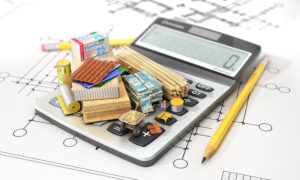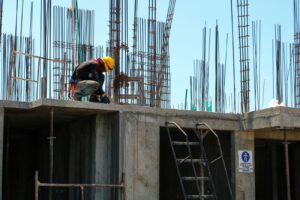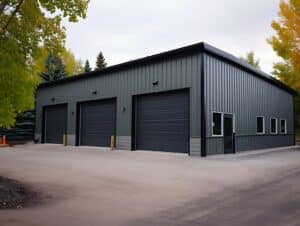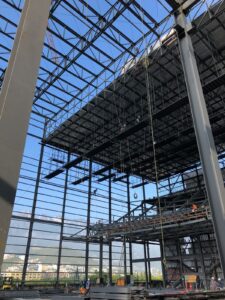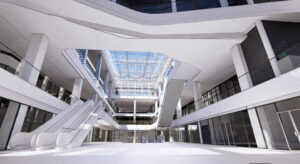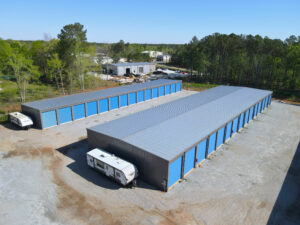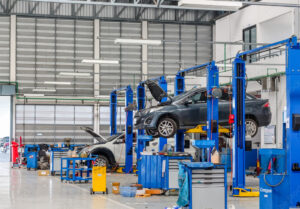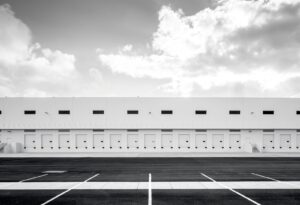Sports facility construction is a complex and multistage process that requires careful planning and meticulous execution. Whether you are building a new sports facility or renovating an existing one, it is essential to understand the basics of construction and ensure that each step is carried out efficiently. In this article, we will explore the key aspects of sports facility construction, from initial planning to the execution phase.

Understanding the Basics of Sports Facility Construction
Before diving into the planning and execution stages, it is important to have a clear understanding of the overall construction process. A sports facility typically involves the construction or renovation of buildings, fields, and other athletic spaces. The complexity of the project may vary depending on factors such as the size of the facility, the type of sports to be accommodated, and the desired amenities.
Importance of Proper Planning in Sports Facility Construction
Proper planning plays a crucial role in ensuring the success of any construction project, and sports facilities are no exception. During the planning phase, thorough research and analysis should be conducted to define the purpose and scope of the facility. This includes considering the sporting activities to be supported, the expected number of users, and any additional requirements such as spectator areas or equipment storage.
Additionally, budgeting and financial planning are crucial aspects of the planning process. Determining the available funds and allocating resources appropriately can help prevent cost overruns and ensure that the project stays within budget. It is also essential to have a contingency plan in place to address any unforeseen circumstances that may arise during construction.
Another critical element of planning is site selection and evaluation. The location of the sports facility can significantly impact its accessibility, visibility, and long-term viability. Factors such as proximity to transportation networks, availability of utilities, and environmental considerations should be carefully evaluated before finalizing the site.
Key Aspects of Execution in Sports Facility Construction
Once the planning phase is complete, the construction project enters the execution stage. This phase involves the actual implementation of the plans and the coordination of various activities. Effective execution requires diligent project management, proactive communication, and strict adherence to timelines.
During the execution stage, skilled laborers and construction professionals come together to bring the plans to life. From laying the foundation to erecting the structures, every step is meticulously executed to ensure the highest quality of workmanship. Specialized equipment and machinery are utilized to expedite the construction process, while strict safety protocols are followed to protect the workers and ensure a secure working environment.
Moreover, the execution stage involves continuous monitoring and supervision to ensure that the project progresses according to the established schedule. Regular inspections are conducted to identify any potential issues or deviations from the plan, allowing for timely adjustments and corrective measures. Effective communication between the project team, stakeholders, and contractors is essential to address any concerns and ensure that everyone is on the same page.
Throughout the execution stage, proper documentation and record-keeping are maintained to track the progress, expenses, and any changes made during the construction process. This documentation serves as a valuable resource for future reference and can help in resolving any disputes or claims that may arise.
Steps Involved in Planning a Sports Facility
Identifying the Purpose and Scope of the Facility
The first step in planning a sports facility is clearly defining its purpose and scope. This involves determining the specific sports or activities that will be accommodated, identifying any special requirements, and understanding the anticipated usage patterns.
For example, if the facility is intended for basketball, considerations such as court size, seating capacity, and locker room facilities need to be taken into account. On the other hand, if the facility is designed for multiple sports, flexibility in design and equipment becomes crucial.
Budgeting and Financial Planning
Establishing a comprehensive budget is critical to the success of any construction project. In the case of sports facility construction, it is important to consider not only the initial construction costs but also ongoing maintenance and operational expenses.
Financial planning should include budgeting for materials, labor, equipment, permits, and any additional factors specific to the project. Seeking input from experts, such as architects and contractors, can help ensure that the budget is realistic and accurate.
Furthermore, it is essential to consider the potential revenue streams that the sports facility can generate. This may include revenue from ticket sales, concessions, sponsorships, and rental fees for hosting tournaments or events. Careful analysis of these revenue sources can help offset the costs associated with the facility’s construction and operation.
Site Selection and Evaluation
Choosing the right location for a sports facility is essential for its long-term success. Factors to consider during site selection include accessibility, proximity to population centers, availability of utilities, and compatibility with the surrounding environment.
Conducting a thorough site evaluation involves assessing the land for any potential issues that may affect construction or usage. This may include environmental impact studies, soil testing, and determining the site’s suitability for the planned sports activities.
Additionally, it is important to consider the potential for future expansion or development around the chosen site. A sports facility that is strategically located in an area with growth potential can attract more users and generate greater community interest.
Designing the Sports Facility
Incorporating Essential Features
When designing a sports facility, it is important to consider the specific needs and requirements of the intended users. This may include incorporating features such as playing fields, courts, seating areas, locker rooms, and equipment storage spaces.
Furthermore, it is essential to take into account the aesthetic appeal of the facility. Incorporating visually pleasing elements such as landscaping, architectural details, and vibrant color schemes can enhance the overall experience for users and spectators alike.
Additionally, accessibility should be a key consideration to ensure that the facility can be used by people of all abilities. Accessibility features may include ramps, elevators, accessible parking, and properly equipped restrooms.
Ensuring Safety and Accessibility
Safety should be a top priority when designing a sports facility. This involves adhering to building codes and regulations, implementing proper lighting and security measures, and minimizing potential hazards.
Moreover, emergency preparedness is crucial in ensuring the safety of all individuals using the facility. This may involve developing evacuation plans, installing emergency communication systems, and providing first aid stations in strategic locations.
Accessibility is also crucial to ensure that individuals with disabilities can fully participate in sports activities. Design considerations may include clear pathways, braille signage, and accessible seating areas.
Sustainability Considerations in Design
Incorporating sustainable design principles in sports facility construction can have long-term benefits for both the environment and the facility’s operating costs. This may include using energy-efficient materials, implementing effective waste management practices, and integrating renewable energy sources.
Furthermore, sustainable practices can extend beyond the construction phase to include ongoing operations and maintenance. Implementing water conservation measures, promoting recycling initiatives, and utilizing eco-friendly cleaning products are all ways to enhance the facility’s sustainability profile.
Execution Phase of Sports Facility Construction
Procurement and Material Management
During the execution phase, procuring the necessary materials and managing the supply chain is critical to keep the construction on schedule. This involves working with vendors, selecting high-quality materials, and ensuring timely delivery to the construction site.
One crucial aspect of procurement and material management is establishing strong relationships with suppliers. By fostering good communication and understanding each other’s needs, construction teams can ensure a steady flow of materials and address any potential delays proactively. Additionally, conducting thorough research on potential vendors and their track records can help in selecting reliable partners for the project.
On-site Construction Management
Proper on-site construction management is vital to ensure that the project progresses smoothly. This includes coordinating subcontractors, managing labor, monitoring progress, and addressing any issues that may arise during construction.
Effective on-site construction management also involves creating a safe and productive work environment. Implementing strict safety protocols, providing necessary training to workers, and regularly inspecting the site for potential hazards are essential practices. Moreover, fostering a positive work culture where teamwork and communication are encouraged can boost morale and productivity among the construction team.
Quality Control and Assurance
To maintain the integrity of the construction project, implementing quality control measures throughout the execution phase is essential. This may involve regular inspections, testing materials for compliance with specifications, and addressing any deficiencies promptly.
In addition to regular quality control inspections, utilizing technology such as Building Information Modeling (BIM) can enhance the accuracy and efficiency of quality assurance processes. BIM allows for detailed 3D modeling of the sports facility, enabling construction teams to identify potential issues before they escalate, leading to improved overall quality and client satisfaction. Emphasizing a culture of quality consciousness among all project stakeholders further reinforces the commitment to delivering a top-notch sports facility.

Conclusion
In conclusion, sports facility construction requires thorough planning and meticulous execution to ensure a successful outcome. By understanding the basics of construction, conducting comprehensive planning, and carefully managing the execution phase, sports facilities can be built or renovated to meet the needs of athletes and sports enthusiasts while adhering to safety, accessibility, and sustainability standards.At SteelCo Buildings, we offer everything needed from project concept to completion. Learn more about our experience in steel building design and design-build services. Call today to speak to one of our experienced team members!


